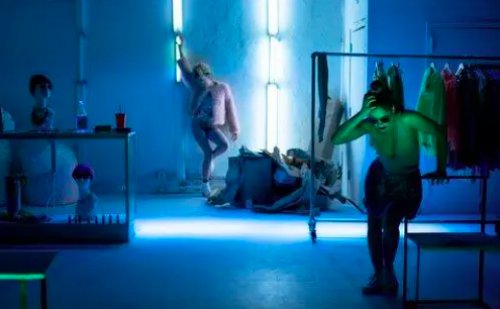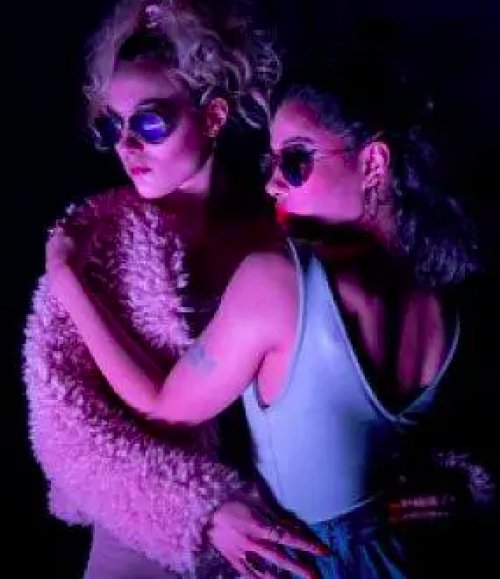
By: Darryl Reilly
A used condom pulled out of a young woman’s hair proves to have been the cause of her discomfort; “My hair hurts.” Later on, after a suggestive examination it is discovered that her vagina cryptically contains ashes. These are some of the John Waters-type bits in playwright Caitlin Saylor Stephens’ surrealistic satire of contemporary life, When We Went Electronic. There are also songs. It takes place in a New York City abandoned branch of American Apparel and it’s both excruciating and vigorously performed, given a busy production and thankfully short. The absurdist style of the piece has shades of Samuel Beckett, Eugène Ionesco and Jean Genet crossed with a reality television sensibility.
Ms. Stephens has a substantial pedigree with her previous works having appeared at prestigious institutions and winning awards. The piffle on display here does exhibit craft, discipline and structure but to little effect as it sputters out after 70-minutes. The title is an Anthony Burgess’ A Clockwork Orange-style attempt at an invented slang. It refers to getting high and is tiresomely repeated countless times. “Look book” is another catchphrase that gets run into the ground. The dialogue is nonsensical, vulgar, often coarse and is supposed to be funny.
Kibitzing and arguing in Valley girl-speak are senior sales associate Bethany and her co-worker Brittany who are in their early 20’s, earn “almost minimum wage” and fear a phone call from “corporate.” A ringing ancient black rotary phone incites horror. “Is it a bomb?” There is much discussion about what happened last evening during a drug-fueled night of partying. It is possible that Brittany was sexually assaulted by a man. There are flashbacks of these events with a lot of graphic physical simulations, one involving the arm of a mannequin.
Interspersed throughout are the musical compositions of composer Sarah Frances Cagianese and lyricist Stephens some of which tunefully recall early Blondie and have some connection to the actions. The two performers heroically demonstrate their full commitment to the antics with their intensely exaggerated yet soulful characterizations
Employing a heightened Drew Barrymore-style drawl and bobbling about like an Absolutely Fabulous heroine is the sensational Drita Kabashi. Wearing a garish fake fur getup, Ms. Kabashi’s brilliance transcends the material with her superior acting and singing talents.

Tiffany Iris’ sing-song Baby Doll voice and captivating presence perfectly realizes Brittany. Ms. Iris is fierce yet vulnerable as she vividly switches from the gabby present to the hazy and frightening violent scenario. Stating that she’s from Colorado and came to New York to be a model and actress has a rare poignant tone due to Iris’ tender delivery.
Director Meghan Finn’s energized staging and utilization of the technical elements fulfils the author’s bleakly cartoonish vision. The accurate looking ominous retail space is grandly executed by scenic designer Skye. Strobes, blackouts and eerie dimness are the tools lighting designer Sarah Johnston uses to achieve a creepy atmosphere. Sound designer Anthony Dean forcefully modulates the music and effects. The flamboyant outfits of costume designer Sharné van Ryneveld have a gleefully twisted sense.
Embedded in the deadpan wildness of When We Went Electronic are worthy takes on themes such as sexual violence, feminism and consumerism but they’re diminished by the discordant tone.
When We Went Electronic (through November 11, 2018)
The Tank, 312 West 36th Street, in Manhattan
For tickets, call 800-838-3006 or visit http://www.thetanknyc.org
Running time: 70 minutes with no intermission
